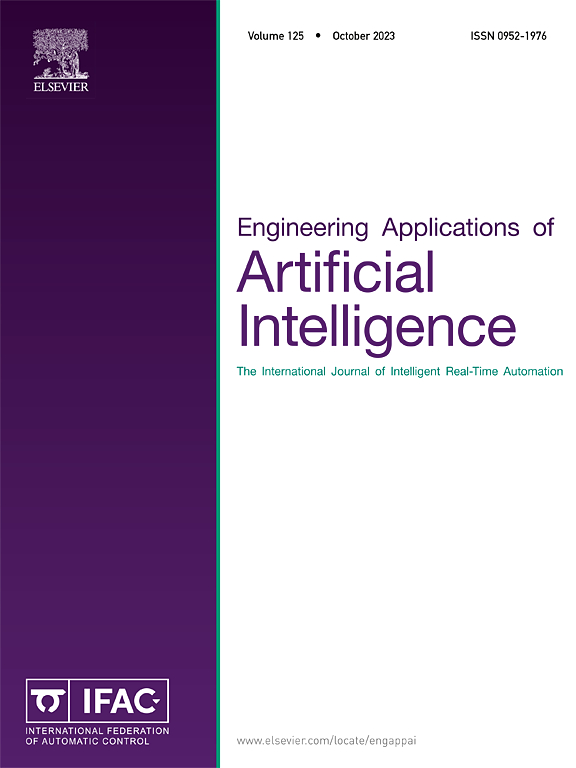Computationally efficient multi-objective optimization of an interior permanent magnet synchronous machine using neural networks
IF 7.5
2区 计算机科学
Q1 AUTOMATION & CONTROL SYSTEMS
Engineering Applications of Artificial Intelligence
Pub Date : 2025-07-25
DOI:10.1016/j.engappai.2025.111753
引用次数: 0
Abstract
Improving the power density of an interior permanent magnet synchronous machine requires a complex and comprehensive approach that includes electromagnetic and thermal aspects. To achieve that, a multi-objective optimization of the machine’s geometry was performed according to selected key performance indicators by using numerical and analytical models. The primary objective of this research was to create a computationally efficient and accurate alternative to a direct finite element method-based optimization. By integrating artificial neural networks as meta-models, we aimed to demonstrate their performance in comparison to existing State-of-the-Art approaches. The artificial neural network approach achieved a nearly 20-fold reduction compared with the finite element method-based approach in computation time while maintaining accuracy, demonstrating its effectiveness as a computationally efficient alternative. The obtained artificial neural network can also be reused for different optimization scenarios and for iterative fine-tuning, further reducing the computation time. To highlight the advantages and limitations of the proposed approach, a multi-objective optimization scenario was performed, which increased the power-to-mass ratio by 16.5%.
基于神经网络的内置永磁同步电机的高效多目标优化
提高内部永磁同步电机的功率密度需要一个复杂而全面的方法,包括电磁和热方面。为了实现这一目标,根据选定的关键性能指标,采用数值和解析模型对机器的几何形状进行了多目标优化。本研究的主要目标是创建一个计算效率高,准确的替代直接基于有限元方法的优化。通过将人工神经网络集成为元模型,我们旨在与现有的最先进的方法相比,展示它们的性能。与基于有限元的方法相比,人工神经网络方法在保持精度的同时,在计算时间上减少了近20倍,证明了其作为一种计算效率高的替代方法的有效性。得到的人工神经网络还可以重复用于不同的优化场景和迭代微调,进一步减少了计算时间。为了突出该方法的优点和局限性,进行了多目标优化,使功率质量比提高了16.5%。
本文章由计算机程序翻译,如有差异,请以英文原文为准。
求助全文
约1分钟内获得全文
求助全文
来源期刊

Engineering Applications of Artificial Intelligence
工程技术-工程:电子与电气
CiteScore
9.60
自引率
10.00%
发文量
505
审稿时长
68 days
期刊介绍:
Artificial Intelligence (AI) is pivotal in driving the fourth industrial revolution, witnessing remarkable advancements across various machine learning methodologies. AI techniques have become indispensable tools for practicing engineers, enabling them to tackle previously insurmountable challenges. Engineering Applications of Artificial Intelligence serves as a global platform for the swift dissemination of research elucidating the practical application of AI methods across all engineering disciplines. Submitted papers are expected to present novel aspects of AI utilized in real-world engineering applications, validated using publicly available datasets to ensure the replicability of research outcomes. Join us in exploring the transformative potential of AI in engineering.
 求助内容:
求助内容: 应助结果提醒方式:
应助结果提醒方式:


